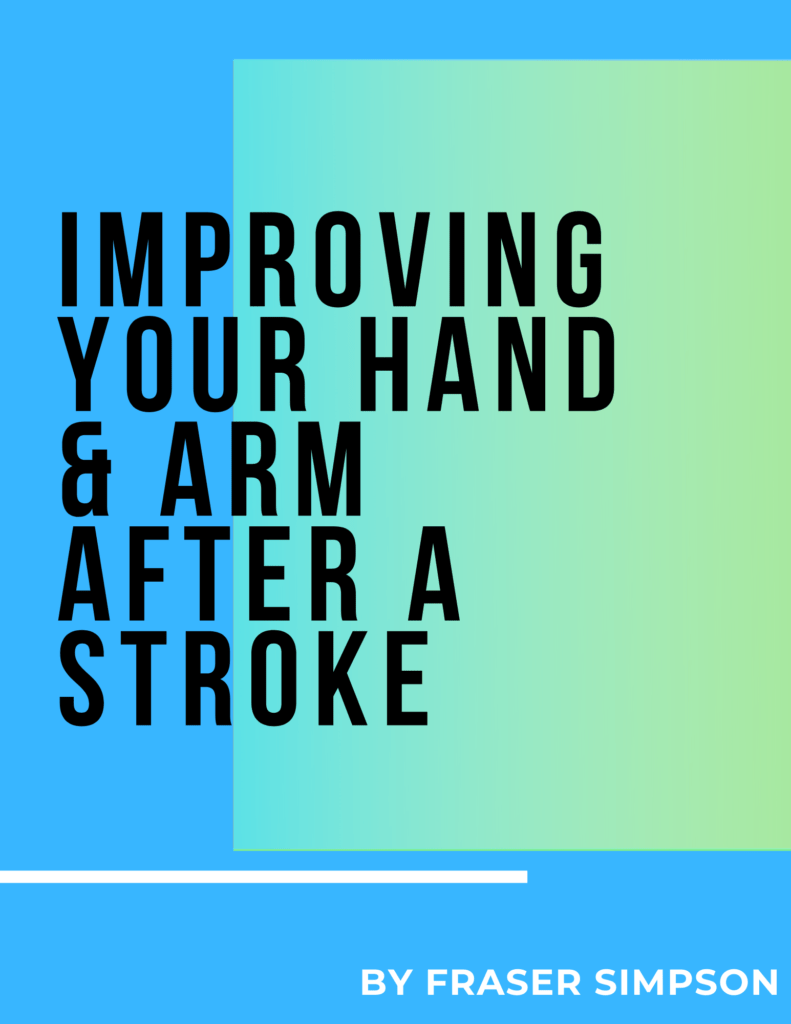Imagine waking up one day and not being able to move your hand or arm. You try to wiggle your fingers or lift your arm, but no matter how hard you try, nothing works.
You feel desperately helpless and frustrated, one day everything is fine and the next you feel like a fraction of your former self.
Unfortunately, this scenario is all too common for people who have suffered from different strokes. Apart from limited movement, stroke survivors also may have problems with sensation or feeling in their hand and arm, ranging from dullness to complete loss of sensation, to pins and needles or even pain, making it significantly harder for you to get around and go about your daily activities.
Luckily, there is hope. Recovery after a stroke can be difficult to predict, but there are several exercises that can help improve the use of your hand and arm. In this blog post, you will discover three exercises that can be helpful for improving your hand and arm after experiencing different strokes.
#1: Shoulder Blade and Arm Exercises
The shoulder blade and arm exercises are a great way to improve the range of motion in your shoulder. This exercise will help you to increase the flexibility of the shoulder blade and its surrounding muscles.
You can sit or stand for this exercise with your arms down by your side. Keeping your elbow straight, turn your hand outwards so that your palms are facing forward and your thumbs point
outwards.
Leading with your thumb, in a small arc out to the side, gently bring your arm up to about 45 degrees then lower it back down to the starting position.
Repeat this 15 times.
To make this exercise harder you can add in a small weight, e.g. a 500ml bottle of water (0.5kg) or a light hand weight / dumbbell.
#2: Finger To Thumb Exercise
This exercise is an excellent way to target your hand muscles. The finger to thumb exercise enhances the flexor and extensor muscles of the hand, improving hand function.
Tap the tip of your thumb to the tip of each finger in turn.
Repeat 5 times for each finger.
#3: Palm Up, Palm Down
Palm up, palm down exercise is an excellent way to improve your wrist movement. This exercise will improve the capacity of wrist flexion and extension. Here’s how you can perform the exercise.
Sit or stand for this exercise. Start with your arm down by your side and elbow bent to about 90 degrees.
Gently turn your hand palm downwards until it faces the ground, now go in the opposite direction and turn your hand palm up so that it is facing the ceiling.
Repeat 15 times.
To make this exercise harder you can add in a small weight, e.g. a 500ml bottle of water (0.5kg) or a light hand weight / dumbbell.
#BONUS: Free Report
If you found these tips useful, they are from our Free Report – Improving Your Hand And Arm After a Stroke.
Not only can you get some more information on the exercises shown above but there is an additional 7 exercises to target hand & fingers, shoulders, wrist and elbows. Download your free copy today, this expert information is from Fraser Simpson Neuro Specialist Physiotherapist, who has created this booklet specifically for people like you, who are looking for advice to help improve the use of your hand and arm after suffering from various different strokes.
Ready To Make A Full Recovery After Your Stroke?
In conclusion, having little to no movement in your hand or arm after experiencing a stroke is a scary and frustrating experience. However, it doesn’t have to be permanent.
These practical tips for improving hand and arm movement after a stroke can serve as a helpful starting point on your road to recovery.
However, each individual’s journey is unique and often requires a more personalized approach for optimal results.
Pairing these self-help tips with expert physiotherapy can significantly enhance their effectiveness. A specialist in Neurophysiotherapy understands the complexities of stroke recovery and can tailor a recovery plan to your specific needs and circumstances, making your rehabilitation journey more focused and potentially faster.
Why not take the next step in your recovery journey?
We offer a free telephone consultation with our highly-qualified Neurophysiotherapist, Fraser. This is an opportunity for you to understand his values, methodology, and why so many individuals in Glasgow choose him for their post-stroke recovery.
Remember, every step, no matter how small, counts towards your recovery.
Reach out today and take that crucial next step on your path to regaining your strength and independence.
Arrange your Free Telephone Consultation NOW!Â
More Free Information To Help With Parkinson’s Disease
Read Our Blog – Getting Your Life Back After Surviving a Stroke
Read Our Blog – Stroke Survivors: Is Shoulder Pain Normal After A Stroke?
Follow Us On Social Media – Facebook



